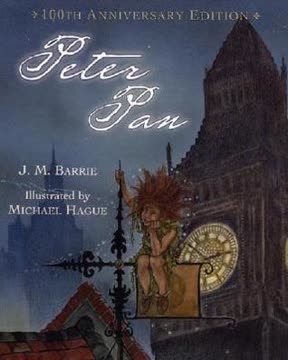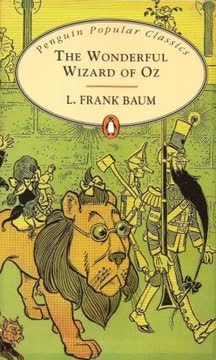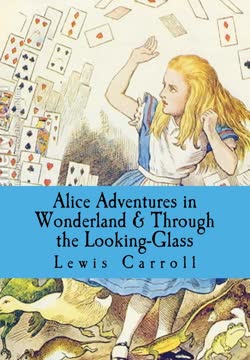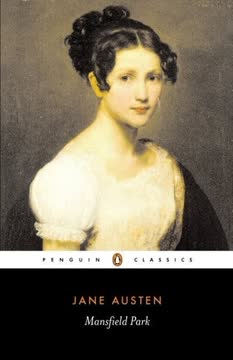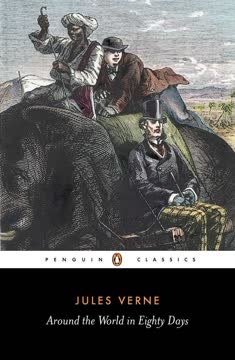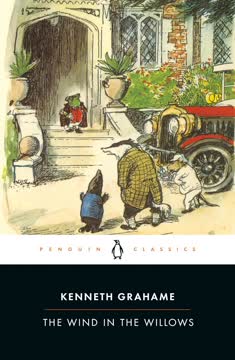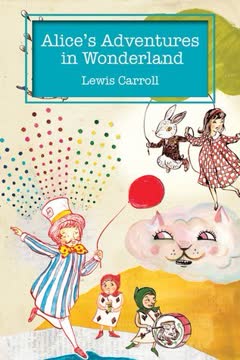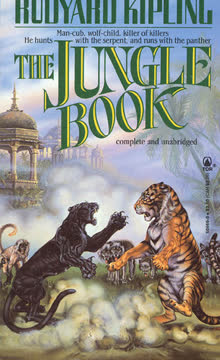Plot Summary
The Boy Who Won't Grow
Peter Pan, the eternal boy, lives in a world apart from adults, refusing to grow up. In London, the Darling family—Mr. and Mrs. Darling and their children Wendy, John, and Michael—lead a loving, if ordinary, life. Wendy, the eldest, is on the cusp of leaving the nursery and childhood behind. Peter, a mysterious figure from the children's dreams, visits their home at night, searching for his lost shadow. He is accompanied by Tinker Bell, a tiny, jealous fairy. The story opens with the tension between the innocence of childhood and the inevitability of growing up, as Peter's presence in the Darlings' lives signals the beginning of an extraordinary adventure.
Shadows and Open Windows
Peter's visits to the nursery are discovered by Mrs. Darling, who finds his shadow and stores it away. The Darlings' dog-nurse, Nana, is banished outside by Mr. Darling in a fit of pride, leaving the children vulnerable. That night, Peter returns to retrieve his shadow, and with Wendy's help, it is sewn back on. The open window becomes a symbol of possibility and danger, as the children's world is about to be upended. The absence of Nana and the open window set the stage for Peter to invite the children to fly away with him.
The Flight to Neverland
Peter teaches Wendy, John, and Michael to fly using happy thoughts and fairy dust. Tinker Bell, jealous of Wendy, tries to interfere, but the children's excitement prevails. They leave their home behind, flying out the window into the night sky, heading for Neverland—a place of endless adventure, where children never grow up. Their parents return too late, finding the nursery empty and the window open, their children gone.
Lost Boys and Jealous Fairies
In Neverland, the children encounter the Lost Boys, a group of boys who, like Peter, have no parents. Tinker Bell, consumed by jealousy, manipulates the Lost Boys into attacking Wendy, nearly causing her death. The island is alive with dangers: pirates led by the fearsome Captain Hook, Native warriors, wild beasts, and mermaids. The children must quickly adapt to this world of shifting alliances and constant peril, with Peter as their unpredictable leader.
The Pirate's Hook
Captain Hook, Peter's nemesis, is introduced as a menacing, elegant pirate with a hook for a hand—lost in a previous encounter with Peter. Hook is haunted by a crocodile that swallowed his hand (and a ticking clock), forever stalking him. Hook's obsession with revenge against Peter drives much of the island's conflict. The pirates, redskins, beasts, and Lost Boys all circle each other in a dangerous dance, each hunting the other.
The Mothering of Wendy
After surviving Tinker Bell's plot, Wendy is embraced by the Lost Boys as their "mother." She tells them stories, cares for them, and brings a sense of home to their wild lives. Peter, both proud and oblivious, enjoys the attention but resists any suggestion of growing up or accepting real responsibility. The boys build Wendy a little house, and she settles into her new role, even as the dangers of Neverland persist.
Adventures Underground
The children and Lost Boys live in an underground home, with Wendy managing the household and Peter leading adventures. The boys' memories of their real parents begin to fade, and Wendy tries to keep their past alive through stories and lessons. Peter's games blur the line between reality and make-believe, and the children's sense of time and self begins to shift. The threat of Hook and the pirates looms ever closer.
Mermaids and Marooned Dangers
The children visit the mermaids' lagoon, a place of beauty and danger. When Tiger Lily, the Native princess, is captured by pirates and left to drown, Peter uses his cunning to save her. A fierce battle ensues, and Peter is wounded. Wendy and Peter are stranded on a rock as the tide rises, facing death. Peter's courage and quick thinking, aided by the Never Bird, save them both, but the experience leaves them changed.
The Never Bird's Rescue
As the tide threatens to drown him, Peter is rescued by the Never Bird, who offers her nest as a boat. In a moment of mutual misunderstanding and eventual cooperation, Peter survives, and the bird's eggs are saved as well. This episode highlights the themes of selflessness, gratitude, and the blurred boundaries between play and real danger in Neverland.
The Happy Home and Doubts
With the redskins now allies, the children enjoy a period of safety and happiness. Wendy's role as mother deepens, but she begins to long for her real home and parents. The boys, too, start to remember their past lives. Peter, however, remains adamant in his refusal to grow up or leave Neverland. The tension between the comforts of home and the lure of eternal childhood grows.
Wendy's Story and the Truth About Mothers
Wendy tells the boys the story of their own flight from home, emphasizing a mother's enduring love. Peter, however, reveals his own heartbreak: when he returned to his mother after staying away too long, he found the window closed and himself forgotten. This revelation shakes the children's faith in the certainty of home and prompts Wendy and her brothers to decide to return to London, inviting the Lost Boys to come with them.
The Pirate Ambush
As the children prepare to leave, Hook and his pirates launch a surprise attack, overwhelming the redskins and capturing Wendy, the boys, and the Lost Boys. Peter is left behind, seemingly doomed by Hook's treachery. The children are taken to the pirate ship, where they face the threat of walking the plank.
Do You Believe in Fairies?
Hook, seeking to destroy Peter, poisons his medicine. Tinker Bell, in a rare act of selflessness, drinks the poison to save Peter and nearly dies. Peter appeals to the audience (and all children) to believe in fairies, and their belief revives Tinker Bell. This iconic moment underscores the power of belief, imagination, and the communal nature of storytelling.
The Battle on the Jolly Roger
Peter sneaks aboard the pirate ship, using trickery and courage to defeat the pirates one by one. The children, initially helpless, are freed by Peter's cunning. The pirates, terrified by what they believe is supernatural vengeance, are routed. The final confrontation between Peter and Hook is set.
Hook or Me This Time
Peter and Hook face off in a climactic duel. Peter's youth, agility, and refusal to play by adult rules give him the advantage. Hook, haunted by his own sense of "good form" and the ticking of the crocodile, is ultimately defeated and meets his end, swallowed by his nemesis. The children are free, and Peter is triumphant, but the victory is tinged with sadness.
The Return to the Nursery
The children sail the pirate ship back to London, guided by Peter. Their parents, wracked with guilt and longing, are finally reunited with their children. The Lost Boys are adopted into the Darling family, but Peter refuses to stay, unable to accept the constraints of growing up. The window, once a symbol of escape, now marks the boundary between childhood and adulthood.
When Wendy Grew Up
Years later, Wendy has grown up and has a daughter of her own. Peter returns, unchanged, seeking Wendy to join him in Neverland, only to find her an adult. Instead, he takes Wendy's daughter, Jane, beginning the cycle anew. The story ends with the promise that as long as children remain "gay and innocent and heartless," Peter Pan will return, and the adventures will continue.
Characters
Peter Pan
Peter Pan is the embodiment of eternal childhood—fearless, cocky, and utterly resistant to the idea of growing up. He is both charming and selfish, capable of great heroism and deep insensitivity. Peter's relationships are defined by his need for admiration and his inability to reciprocate mature love or responsibility. He is adored by the Lost Boys, envied and resented by Tinker Bell, and both loved and pitied by Wendy. Psychologically, Peter represents the fantasy of perpetual youth, but also the loneliness and loss that come from refusing to change. His inability to remember or value the past, and his detachment from adult emotions, make him both magical and tragic.
Wendy Darling
Wendy is the heart of the story—a girl on the threshold of womanhood, torn between the allure of Neverland and the pull of home. She quickly assumes the role of mother to the Lost Boys, finding purpose and identity in caring for others. Wendy's nurturing nature is both her strength and her vulnerability; she longs for love and stability, but is also seduced by adventure. Her journey is one of self-discovery, as she learns the limits of fantasy and the value of family. Wendy's eventual return to the real world, and her acceptance of adulthood, mark her as the story's emotional anchor.
Captain Hook
Captain James Hook is Peter's opposite—a grown man obsessed with revenge, haunted by the passage of time (symbolized by the ticking crocodile), and tormented by his own sense of lost youth. Hook is both villainous and pitiable, a figure of dark charisma and deep insecurity. His obsession with "good form" and his fear of being unloved or forgotten make him a complex antagonist. Hook's psychological struggle with Peter is as much about his own lost innocence as it is about power.
Tinker Bell
Tinker Bell is a tiny fairy whose emotions are intense and singular—she can only feel one thing at a time, whether it's love, jealousy, or rage. Her devotion to Peter is fierce, but her jealousy of Wendy nearly leads to tragedy. Tinker Bell's ultimate act of self-sacrifice redeems her, and her revival through the belief of children is one of the story's most enduring symbols. She represents the volatility and magic of childhood emotions.
The Lost Boys
The Lost Boys are children who, like Peter, have no parents and live in perpetual play. Each has a distinct personality—Tootles is humble, Slightly is conceited, Curly is accident-prone, the Twins are indistinguishable. They crave the love and structure that Wendy provides, and their willingness to follow her back to the real world reflects their underlying desire for belonging and stability. Psychologically, they are the parts of childhood that long for care and acceptance.
John Darling
John is logical and somewhat pompous, eager to assert his authority but still very much a child. He enjoys the adventure of Neverland but is quick to remember the comforts of home. John's journey mirrors the transition from childhood bravado to the realization of vulnerability and the need for family.
Michael Darling
Michael is the youngest Darling child, full of wonder and easily influenced by his siblings. He adapts quickly to Neverland but is the first to forget his real parents. Michael represents the purest form of childhood innocence and the ease with which it can be lost.
Mr. and Mrs. Darling
Mr. Darling is proud and anxious about his role as provider, while Mrs. Darling is gentle, romantic, and deeply loving. Their struggles with guilt and longing after their children's disappearance highlight the pain of parental loss and the limits of adult control. They symbolize the world of responsibility and care that Peter rejects.
Tiger Lily
Tiger Lily is the princess of the island's Native tribe, courageous and loyal. She is saved by Peter and becomes his ally, representing both the allure and the dangers of the unknown. Her character is less developed but serves as a foil to Wendy and a symbol of independence.
Nana
Nana, the Darlings' dog-nurse, is a figure of comic devotion and maternal care. Her banishment from the nursery is the catalyst for the children's flight, and her absence is keenly felt. Nana embodies the protective instincts of parenthood and the vulnerability of those who care for others.
Plot Devices
Neverland as Metaphor
Neverland is not just a place but a state of mind—a landscape shaped by the dreams, fears, and desires of children. It is mutable, dangerous, and alluring, representing both the freedom and the perils of refusing to grow up. The island's shifting geography and inhabitants mirror the instability of childhood fantasy and the inevitability of change.
The Open Window
The open window in the Darling nursery is a recurring motif, representing the threshold between safety and adventure, home and the unknown. It is both an invitation and a risk, a way in and a way out. The window's status—open or closed—reflects the characters' readiness to embrace or reject change.
The Shadow
Peter's lost shadow is a symbol of his incomplete self, his longing for connection, and his resistance to integration. The act of sewing the shadow back on is both a literal and metaphorical attempt to become whole, but Peter's inability to accept help or gratitude reveals his emotional immaturity.
The Crocodile and the Clock
The crocodile that pursues Hook, with a ticking clock inside, is a vivid symbol of time's relentless advance and the adult fear of mortality. For Hook, the crocodile is both nemesis and fate, a reminder that no one can escape growing old or dying.
Belief and Audience Participation
The moment when Peter asks the audience to believe in fairies to save Tinker Bell breaks the fourth wall, making the reader or viewer complicit in the story's magic. This device underscores the power of belief and the communal nature of storytelling, suggesting that imagination can alter reality.
Cyclical Structure
The story's ending, with Peter returning for Wendy's daughter and then her granddaughter, creates a sense of eternal recurrence. Childhood is fleeting, but the longing for it—and the stories that preserve it—endure across generations.
Analysis
Peter Pan endures because it captures the paradox at the heart of childhood: the desire to remain innocent and free, and the inevitability of growing up and leaving that innocence behind. Barrie's narrative is both whimsical and deeply melancholic, celebrating the magic of imagination while acknowledging its limitations. The story's enduring appeal lies in its refusal to resolve this tension—Peter's eternal youth is both enviable and tragic, a fantasy that comes at the cost of love, memory, and belonging. The adults in the story are flawed but loving, and the children's adventures are thrilling but ultimately unsustainable. In a modern context, Peter Pan invites us to cherish the wonder of childhood while accepting the necessity of change, reminding us that the stories we tell—and the belief we invest in them—can keep a part of that magic alive, even as we grow up.
Last updated:
FAQ
0. Synopsis & Basic Details
What is Peter Pan about?
- Eternal Childhood's Allure: Peter Pan tells the story of a mischievous, magical boy who refuses to grow up, luring three London children—Wendy, John, and Michael Darling—to the fantastical Neverland. This island is a realm of pirates, mermaids, and Lost Boys, where adventures are endless, and the rules of the adult world do not apply.
- The Call of Adventure: The narrative follows the Darling children as they embrace a life of make-believe and danger, with Wendy stepping into a maternal role for Peter and the Lost Boys. Their journey is a thrilling escape from the mundane, filled with battles against the villainous Captain Hook and encounters with Neverland's whimsical inhabitants.
- Bittersweet Return Home: Ultimately, the children face the choice between eternal youth in Neverland and the inevitable reality of growing up. Their eventual return to London and the poignant reunion with their parents highlight the story's core themes of memory, loss, and the enduring, yet fleeting, magic of childhood.
Why should I read Peter Pan?
- Rich Thematic Depth: Beyond a simple children's fantasy, Peter Pan offers a profound exploration of universal themes such as the nature of childhood, the fear of adulthood, the power of imagination, and the bittersweet passage of time. It delves into the psychological complexities of its characters, making it resonate deeply with readers of all ages.
- Unique Narrative Voice: J.M. Barrie's distinctive narrative style, characterized by its direct address to the reader, playful asides, and sudden shifts between whimsical humor and poignant melancholy, creates an immersive and thought-provoking reading experience. The narrator often breaks the fourth wall, inviting readers to actively participate in the story's magic and meaning.
- Enduring Cultural Impact: Peter Pan has transcended its literary origins to become a foundational myth in Western culture, influencing countless adaptations and interpretations. Reading the original text provides a deeper understanding of the iconic characters and symbols that have shaped our collective imagination, from the ticking crocodile to the concept of "Neverland" itself.
What is the background of Peter Pan?
- Barrie's Personal Grief: The story is deeply rooted in J.M. Barrie's personal life, particularly his enduring grief over the death of his older brother, David, who died just before his 14th birthday. This tragedy left Barrie's mother inconsolable, and Barrie himself spent his life trying to "become" his lost brother, imbuing Peter Pan with the poignant desire to remain forever young, a "ghost child" (Introduction, p. 19).
- Edwardian Era's View of Childhood: Written in the early 20th century, Peter Pan reflects the Edwardian fascination with childhood as a period of innocence and freedom, often idealized as separate from the responsibilities of adulthood. The story captures a cultural longing for a simpler time, contrasting the rigid societal expectations of the era with the unbridled imagination of children.
- Literary Allusions and Subversions: Barrie weaves in numerous literary and cultural references, from the "Sea-Cook" (Long John Silver from Treasure Island) to Cinderella, and even Shakespeare's A Midsummer Night's Dream (Chapter II, Endnote 1). He often subverts traditional fairy tale tropes, presenting a fairy (Tinker Bell) who is "quite a common fairy" (Chapter III, p. 29) and a hero who is both charming and deeply flawed, challenging conventional notions of good and evil.
What are the most memorable quotes in Peter Pan?
- "All children, except one, grow up." (Chapter I, p. 7): This opening line immediately establishes the central theme of the novel, setting a melancholic tone for the fantastical journey. It highlights Peter's unique, yet ultimately isolating, existence and foreshadows the inevitable fate of all other children, including Wendy, John, and Michael.
- "To die will be an awfully big adventure." (Chapter VIII, p. 86): Uttered by Peter Pan when he believes he is about to drown, this quote encapsulates his fearless, almost reckless, approach to life and death. It reveals his profound detachment from mortality, viewing even the ultimate end as just another thrilling experience, a perspective that both defines his eternal youth and underscores his emotional immaturity.
- "So it will go on, so long as children are gay and innocent and heartless." (Chapter XVII, p. 159): This concluding line offers a stark, yet insightful, commentary on the nature of childhood and Peter's perpetuation. The word "heartless" is particularly striking, suggesting that the unburdened joy and innocence of children, while enchanting, also come with a certain emotional detachment necessary for Peter's world to continue.
What writing style, narrative choices, and literary techniques does J.M. Barrie use?
- Intrusive, Conversational Narrator: Barrie employs a highly self-aware and conversational narrator who frequently addresses the reader directly, offering personal opinions, asides, and even debating narrative choices (e.g., "Which of these adventures shall we choose? The best way will be to toss for it." Chapter VII, p. 76). This technique creates an intimate, almost conspiratorial, relationship with the audience, blurring the lines between storyteller and reader.
- Blend of Whimsy and Melancholy: Barrie's prose masterfully oscillates between lighthearted fantasy and profound sadness. He uses whimsical descriptions and playful language to depict Neverland's magic, but consistently undercuts this with poignant observations about loss, forgetfulness, and the pain of growing up, creating a unique bittersweet tone that defines the novel.
- Metafictional Elements: The narrative often draws attention to its own construction, with characters discussing stories, make-believe, and the act of remembering. Wendy's storytelling, Peter's "greatest pretend" (Introduction, p. 20), and the narrator's direct questions about belief (Chapter XIII, p. 118) all serve to highlight the power and artifice of storytelling itself, inviting readers to consider the nature of reality and imagination.
1. Hidden Details & Subtle Connections
What are some minor details that add significant meaning?
- Mrs. Darling's Unattainable Kiss: The "one kiss on it that Wendy could never get" (Chapter I, p. 7) on Mrs. Darling's mouth symbolizes the elusive, deepest part of a mother's love or perhaps her true, independent self that even her husband cannot fully possess. Peter Pan, however, "took Mrs. Darling's kiss with him" (Chapter XVII, p. 155) at the end, suggesting he embodies or captures this pure, unburdened maternal affection that remains forever out of reach for adults.
- Mr. Darling's Tie and Social Anxiety: Mr. Darling's struggle with his tie (Chapter II, p. 20) is a seemingly trivial detail that profoundly reveals his deep-seated social anxiety and need for control and "good form." His exaggerated threats about starvation if his tie isn't perfect underscore the immense pressure he feels to maintain appearances, a trait that ironically mirrors Captain Hook's own obsession with "good form" (Chapter XIV, p. 124).
- The Stars' Active Role: The stars are not merely decorative but are depicted as sentient beings who "winked at her" (Mrs. Darling, Chapter II, p. 23) and actively conspire with Peter, blowing open the window and shouting "Now, Peter!" (Chapter II, p. 24) to facilitate the children's escape. This subtle detail suggests that the universe itself, or at least the magical elements within it, is on Peter's side, actively encouraging the flight from adulthood.
What are some subtle foreshadowing and callbacks?
- Mrs. Darling's Premonitory Dream: Before Peter's first appearance, Mrs. Darling dreams that "Neverland had come too near and that a strange boy had broken through from it" (Chapter I, p. 14). This dream not only foreshadows Peter's arrival but also hints at the permeable boundary between the real world and Neverland, suggesting that the fantastical realm is always lurking just beneath the surface of conscious thought.
- Nana's "Danger" Bark: When Mr. Darling banishes Nana, her bark changes from an "unhappy bark" to one that "smells danger" (Chapter II, p. 23). This subtle shift in her vocalization immediately signals the impending peril for the children, highlighting Nana's intuitive, animalistic connection to the unseen threats that the adults, preoccupied with their own concerns, fail to perceive.
- Peter's Forgetfulness of Wendy: Early in their flight, Wendy worries that Peter will forget them, and indeed, he sometimes returns without remembering them well, requiring Wendy to remind him, "I'm Wendy" (Chapter IV, p. 40). This foreshadows his ultimate inability to remember Wendy as she grows up, emphasizing his transient nature and the tragic cost of his eternal youth.
What are some unexpected character connections?
- Hook and Mr. Darling's Shared "Good Form": Captain Hook's obsession with "good form" (Chapter XIV, p. 124), even in his villainy, unexpectedly links him to Mr. Darling's anxieties about social propriety. Both characters are deeply concerned with appearances and societal expectations, suggesting that the adult world, whether respectable or villainous, is bound by a similar, often stifling, code of conduct.
- Peter's "Cockiness" as Hook's Torment: The narrator explicitly states that "It was Peter's cockiness" (Chapter XII, p. 110) that "goaded the pirate captain to frenzy." This reveals an unexpected psychological connection where Peter's defining trait, his youthful arrogance, is the very thing that most deeply irritates and obsesses his adult nemesis, making their rivalry intensely personal and almost symbiotic.
- The Never Bird's Maternal Instinct: The Never Bird, initially a minor detail, becomes a crucial figure when she selflessly offers her nest and eggs to save Peter from drowning (Chapter IX, p. 87). This act of maternal sacrifice, despite Peter's past torment of her, unexpectedly mirrors Wendy's own nurturing role and highlights the universal, instinctual nature of motherly love, even in the wild.
Who are the most significant supporting characters?
- Liza, the Unseen Catalyst: Liza, the Darlings' other servant, though rarely seen, plays a crucial role in the narrative. She is the one who finds Mr. Darling's hidden medicine and puts it back, unknowingly setting the stage for Hook's poisoning plot (Chapter II, p. 21). Her "no imagination" (Chapter XVI, p. 145) contrasts sharply with the Darlings' romanticism, grounding the story in a practical reality that the children escape.
- The Stars as Cosmic Witnesses: The stars are more than just background; they are active, curious observers of the children's flight, "crowding round the house, as if curious to see what was to take place there" (Chapter II, p. 23). They even "blew the window open" (Chapter III, p. 36) to aid Peter, acting as silent, ancient forces that facilitate the children's escape into fantasy, embodying the cosmic scale of their adventure.
- Tootles, the Humble Scapegoat: Tootles, the "most unfortunate" and "humblest of the boys" (Chapter V, p. 49), is significant for his role in accidentally shooting Wendy and later for his unexpected dignity in accepting blame. His character highlights the vulnerability and impressionability of the Lost Boys, and his appeal to Wendy as an "English gentleman" (Chapter XI, p. 103) reveals a deep-seated longing for moral guidance.
2. Psychological, Emotional, & Relational Analysis
What are some unspoken motivations of the characters?
- Peter's Fear of Oblivion: While Peter explicitly states he doesn't want to grow up to "have fun" (Chapter III, p. 27), an unspoken motivation is his fear of being forgotten or replaced, as hinted by his story of his mother barring her window and finding "another little boy sleeping in my bed" (Chapter XI, p. 101). This suggests his eternal youth is also a defense mechanism against the pain of abandonment and the loss of his unique identity.
- Wendy's Desire for Significance: Beyond her natural motherly instincts, Wendy's eagerness to be a mother to the Lost Boys and her initial reluctance to return home stem from a deep, unspoken desire for significance and to be truly needed. In Neverland, she is "Wendy lady," the indispensable figure, a role that offers her a sense of purpose and importance she might not feel as merely the eldest Darling child.
- Hook's Craving for Validation: Despite his villainy, Hook's constant concern for "good form" and his internal torment over whether he is "distinguished at anything" (Chapter XIV, p. 124) reveal an unspoken craving for validation and respect, perhaps from a world that rejected him. His desire to defeat Peter is not just about revenge but about proving his own worth and escaping the "claw within him sharper than the iron one" (Chapter XIV, p. 125) of self-doubt.
What psychological complexities do the characters exhibit?
- Peter's Selective Memory and Emotional Detachment: Peter exhibits a profound psychological complexity through his selective memory, forgetting past adventures and even people like Tinker Bell and Captain Hook (Chapter XVII, p. 154). This isn't just forgetfulness but an active emotional detachment, allowing him to remain "gay and innocent and heartless" (Chapter XVII, p. 159), free from the burdens of memory, grief, or lasting emotional connection, which is both his power and his tragedy.
- Hook's Internalized Class Struggle: Captain Hook, despite being a pirate, is tormented by his past at a "famous public school" (Chapter XIV, p. 124) and his obsession with "good form." This internal conflict between his brutal pirate reality and his aristocratic upbringing creates a complex character who is both a ruthless villain and a man deeply insecure about his social standing, constantly battling an internalized sense of "bad form."
- Mrs. Darling's Romantic Idealism vs. Reality: Mrs. Darling's "romantic mind" (Chapter I, p. 7), described as "tiny boxes, one within the other," suggests a rich inner world of imagination and idealism. However, this is contrasted with the practicalities of her life, such as calculating expenses and her husband's anxieties. Her initial belief in Peter Pan from her own childhood memories, and her later grief, highlight the psychological tension between maintaining a romantic view of life and confronting harsh realities.
What are the major emotional turning points?
- Tinker Bell's Selfless Sacrifice: The moment Tinker Bell drinks the poisoned medicine intended for Peter (Chapter XIII, p. 117) is a major emotional turning point. It transforms her from a purely jealous and mischievous fairy into a figure capable of profound love and self-sacrifice, eliciting a powerful emotional response from Peter and the audience, underscoring the depth of her devotion.
- Peter's Confrontation with Wendy's Adulthood: When Peter returns to find Wendy grown up and a mother (Chapter XVII, p. 157), it marks a heartbreaking emotional climax. His cry of pain and subsequent sobs reveal the profound impact of this irreversible change, forcing him to confront the reality of time and loss, a reality he had always evaded.
- Mr. Darling's Kennel Penance: Mr. Darling's decision to live in Nana's kennel out of remorse for banishing her (Chapter XVI, p. 144) is a significant emotional turning point for his character. It demonstrates a profound shift from his initial pride and social anxiety to a genuine, albeit exaggerated, act of humility and repentance, revealing a deeper capacity for love and self-awareness.
How do relationship dynamics evolve?
- Wendy's Transition from Child to Mother Figure: Wendy's relationship with Peter and the Lost Boys rapidly evolves from peer to surrogate mother. Initially, she is a child playing at being grown-up, but her role quickly becomes genuine, providing comfort, stories, and care, transforming the chaotic Lost Boys into a "happy home" (Chapter X, p. 90). This evolution highlights her burgeoning maturity and the inherent nurturing aspect of her character.
- Peter and Hook's Symbiotic Rivalry: The dynamic between Peter and Hook is not merely hero vs. villain but a deeply personal, almost symbiotic rivalry. Hook is defined by his hatred and obsession with Peter, while Peter's existence is invigorated by the challenge Hook presents. Their relationship is a constant dance of pursuit and evasion, each needing the other to define their own identity within Neverland.
- The Lost Boys' Shifting Loyalties: The Lost Boys' relationships evolve from a wild, unparented existence to a yearning for a mother figure, then a brief period of loyalty to Wendy, and finally, an easy acceptance of adoption into the Darling family. Their quick adaptation and eventual forgetting of Neverland (Chapter XVII, p. 154) illustrate the transient nature of childhood attachments and the powerful pull of a stable home.
4. Interpretation & Debate
Which parts of the story remain ambiguous or open-ended?
- Peter Pan's True Origin and Nature: The story leaves Peter's exact origins ambiguous, stating he "ran away the day I was born" (Chapter III, p. 27) and that he is "a little bird that has broken out of the egg" (Chapter XV, p. 136). This ambiguity fuels debate about whether he is a literal fairy, a ghost child (as hinted in the Introduction, p. 19), or a symbolic representation of childhood itself, never fully defined or understood.
- The Reality of Neverland: While presented as a physical place, Neverland's mutable nature—"always more or less an island" (Chapter I, p. 11) that "varies a good deal" (Chapter I, p. 11) and is shaped by children's minds—leaves its reality open to interpretation. Is it a dreamscape, a collective unconscious, or a truly magical realm? The narrative suggests it exists on the edge of perception, becoming "very nearly real" (Chapter I, p. 12) in the moments before sleep.
- The "Heartless" Nature of Children: The story concludes by stating that Peter's adventures will continue "so long as children are gay and innocent and heartless" (Chapter XVII, p. 159). The inclusion of "heartless" is a provocative ambiguity, prompting readers to question whether children's innocence is truly pure or if it inherently involves a certain self-centeredness and lack of empathy that allows them to forget and move on.
What are some debatable, controversial scenes or moments in Peter Pan?
- Peter's Cruelty and Forgetfulness: Peter's casual cruelty, such as his indifference to Michael falling (Chapter IV, p. 38) or his quick forgetfulness of Wendy and Tinker Bell (Chapter XVII, p. 154), is often debated. This challenges the traditional image of a heroic protagonist, forcing readers to confront the darker, less romanticized aspects of eternal childhood, where empathy and lasting bonds are sacrificed for perpetual play.
- The Portrayal of the "Redskins": The depiction of the Piccaninny tribe, with their "savage warfare" (Chapter XII, p. 105), "heavy gorging" (Chapter V, p. 53), and broken English (Chapter X, p. 91), is a controversial element. While Barrie attempts to imbue Tiger Lily with dignity, the overall portrayal reflects colonial-era stereotypes, prompting modern readers to critically examine the cultural context and potential biases within the narrative.
- **The Cycle of "Mother
Review Summary
Peter Pan receives mixed reviews, with some praising its imaginative storytelling and enduring themes of childhood, while others criticize its darker and unsettling portrayal of Peter. Readers appreciate the book's whimsical narrative and and complex characters but note its darker undertones and problematic depictions. Many find the story more nuanced and thought-provoking than adaptations, exploring themes of growing up, mortality, and the bchildhood. Some readers struggle with the dated languageated language and attitudes, while others cherish the nostalgic appeal of Neverland.
Similar Books
Download PDF
Download EPUB
.epub digital book format is ideal for reading ebooks on phones, tablets, and e-readers.
